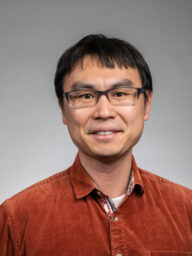CCB Colloquium – Professor Keith Mickolajczyk, RWJ Medical School
Single-molecule biophysical approaches to studying the mechanisms of motor proteins Ribosomes are molecular machines made of protein and RNA that translate mRNA into proteins. The biogenesis of new ribosomes is the most energetically costly process in the cell, accounting for ~60% of all ATP consumed. New ribosomes begin as rRNA, and are sequentially matured through … Read More




